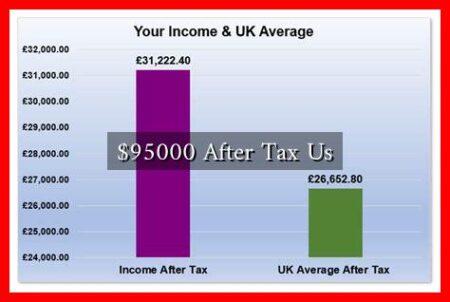-
Table of Contents
What Is Income Tax in the U.S.?
Income tax is a crucial component of the United States’ tax system, serving as a primary source of revenue for the federal government and many state governments. Understanding income tax is essential for individuals and businesses alike, as it affects financial planning, investment decisions, and overall economic health. This article delves into the intricacies of income tax in the U.S., including its history, structure, and implications for taxpayers.
The Basics of Income Tax
Income tax is a tax imposed on individuals and entities based on their income or profits. In the U.S., income tax is progressive, meaning that the tax rate increases as the taxable income increases. The federal government, as well as most states, levy income taxes, although the rates and structures can vary significantly.
Types of Income Tax
Income tax can be categorized into several types:
- Individual Income Tax: This tax is levied on the income earned by individuals, including wages, salaries, dividends, and interest.
- Corporate Income Tax: Corporations are taxed on their profits, which can differ from individual tax rates.
- Capital Gains Tax: This tax applies to the profit made from the sale of assets or investments, such as stocks or real estate.
- Self-Employment Tax: Individuals who work for themselves must pay this tax, which covers Social Security and Medicare taxes.
How Income Tax Works
The income tax system in the U.S. operates on a pay-as-you-go basis. This means that taxpayers are required to pay taxes on their income as they earn it, rather than waiting until the end of the year. Here’s how it typically works:
- Withholding: Employers withhold a portion of an employee’s paycheck for federal income tax, which is then sent to the IRS.
- Estimated Payments: Self-employed individuals or those with significant income not subject to withholding must make estimated tax payments quarterly.
- Tax Returns: At the end of the tax year, individuals and businesses file tax returns to report their income and calculate their tax liability.
Tax Brackets and Rates
The U.S. federal income tax system is divided into tax brackets, which determine the rate at which income is taxed. As of 2023, the federal income tax brackets are as follows:
- 10% on income up to $11,000 for single filers
- 12% on income over $11,000 up to $44,725
- 22% on income over $44,725 up to $95,375
- 24% on income over $95,375 up to $182,100
- 32% on income over $182,100 up to $231,250
- 35% on income over $231,250 up to $578,125
- 37% on income over $578,125
These brackets are adjusted annually for inflation, and taxpayers can also benefit from various deductions and credits that can lower their taxable income.
State Income Taxes
In addition to federal income tax, most states impose their own income taxes. State tax rates can vary widely, with some states having a flat tax rate while others employ a progressive system similar to the federal government. Notably, a few states, such as Florida and Texas, do not levy a state income tax at all.
Implications of Income Tax
Income tax has significant implications for both individuals and the economy:
- Funding Government Services: Income tax revenue is essential for funding public services such as education, healthcare, and infrastructure.
- Economic Behavior: Tax rates can influence individual and business decisions regarding spending, saving, and investing.
- Social Equity: A progressive tax system aims to reduce income inequality by taxing higher earners at higher rates.
Conclusion
Income tax is a fundamental aspect of the U.S. financial landscape, impacting individuals, businesses, and the economy as a whole. Understanding its structure, rates, and implications is crucial for effective financial planning and compliance. As tax laws continue to evolve, staying informed about changes in income tax regulations is essential for all taxpayers. For more detailed information on income tax, you can visit the IRS website.


